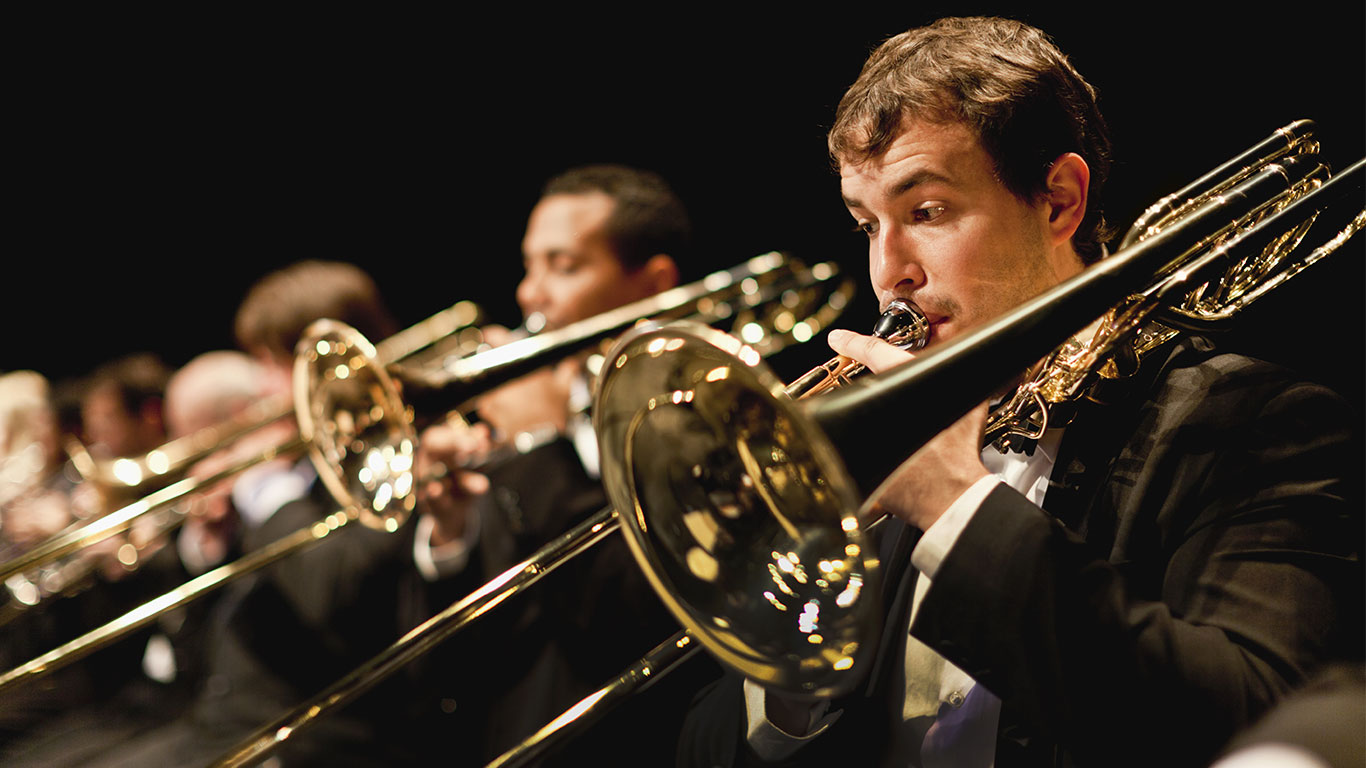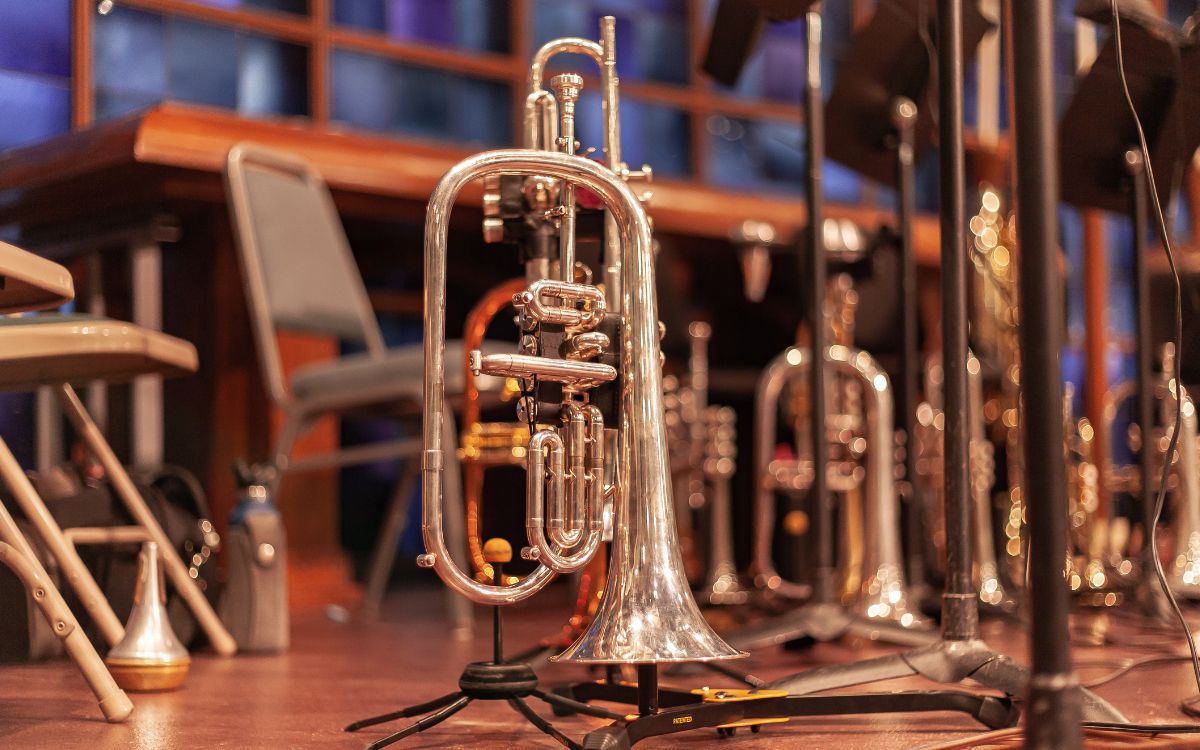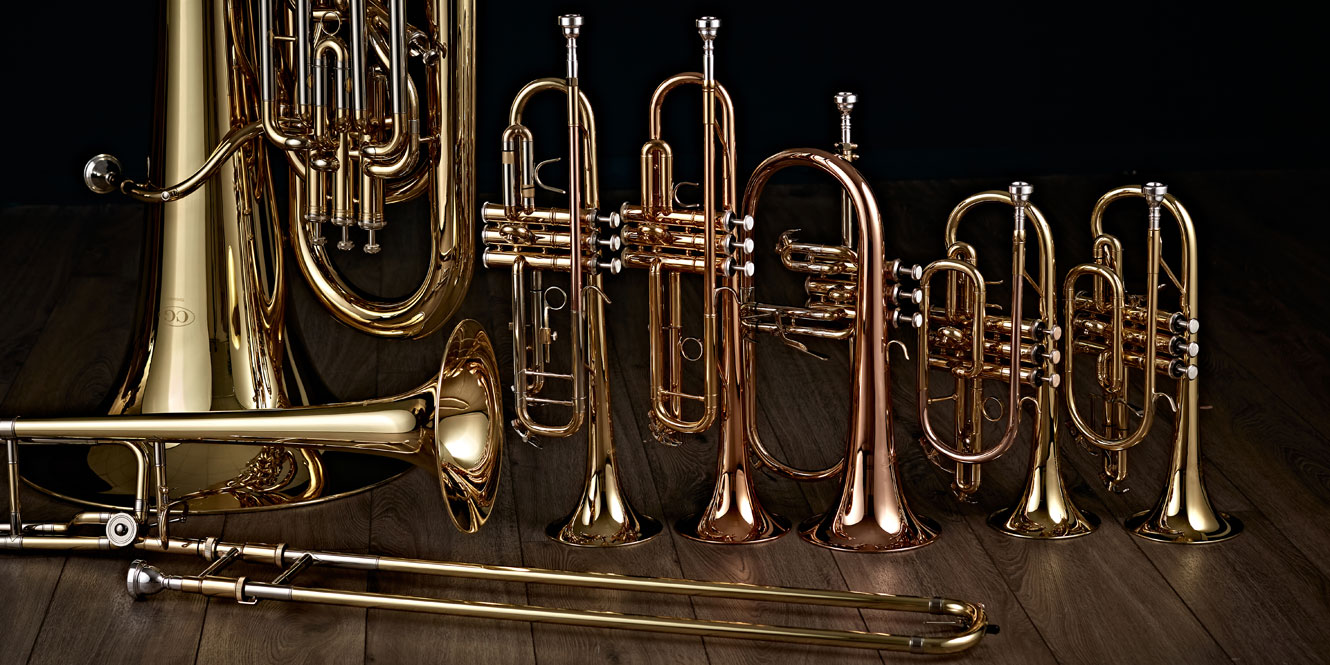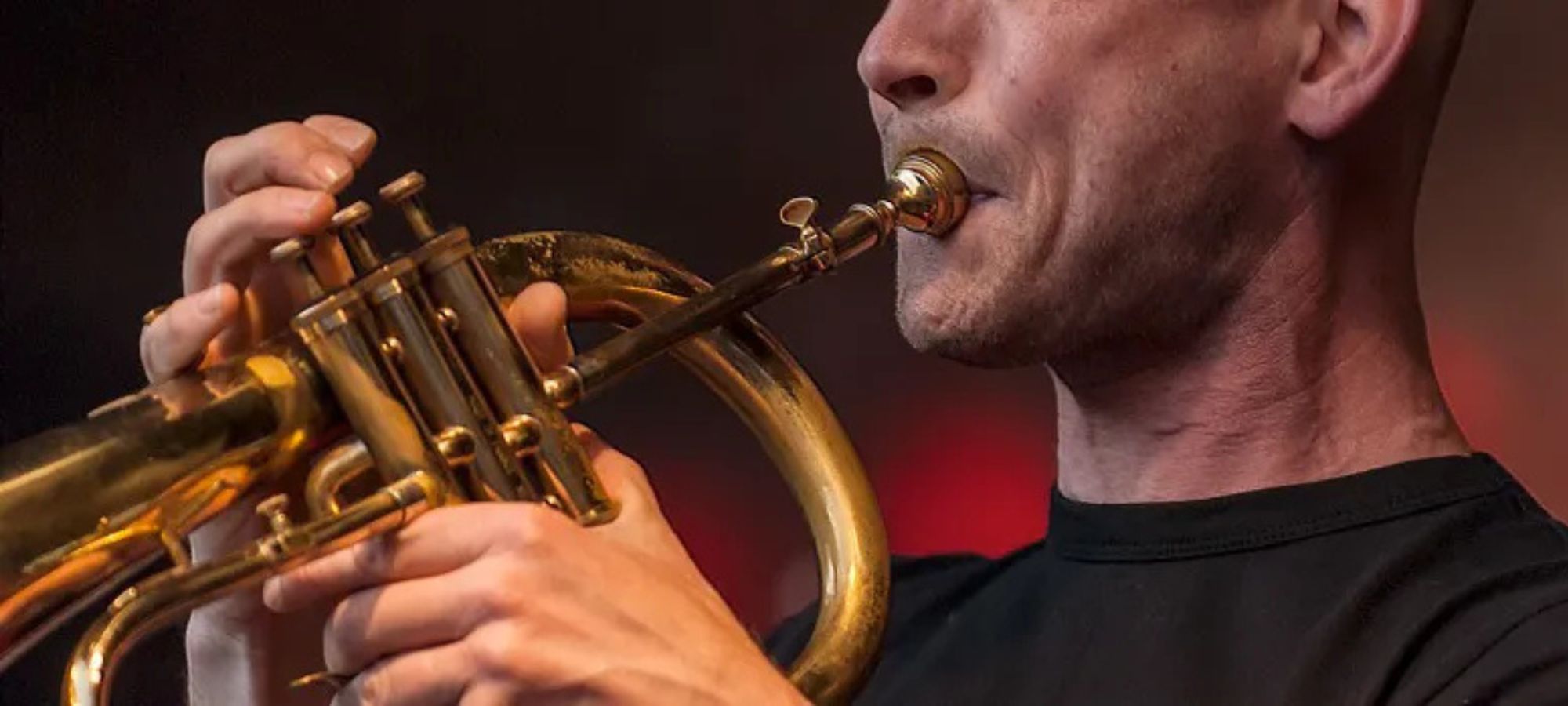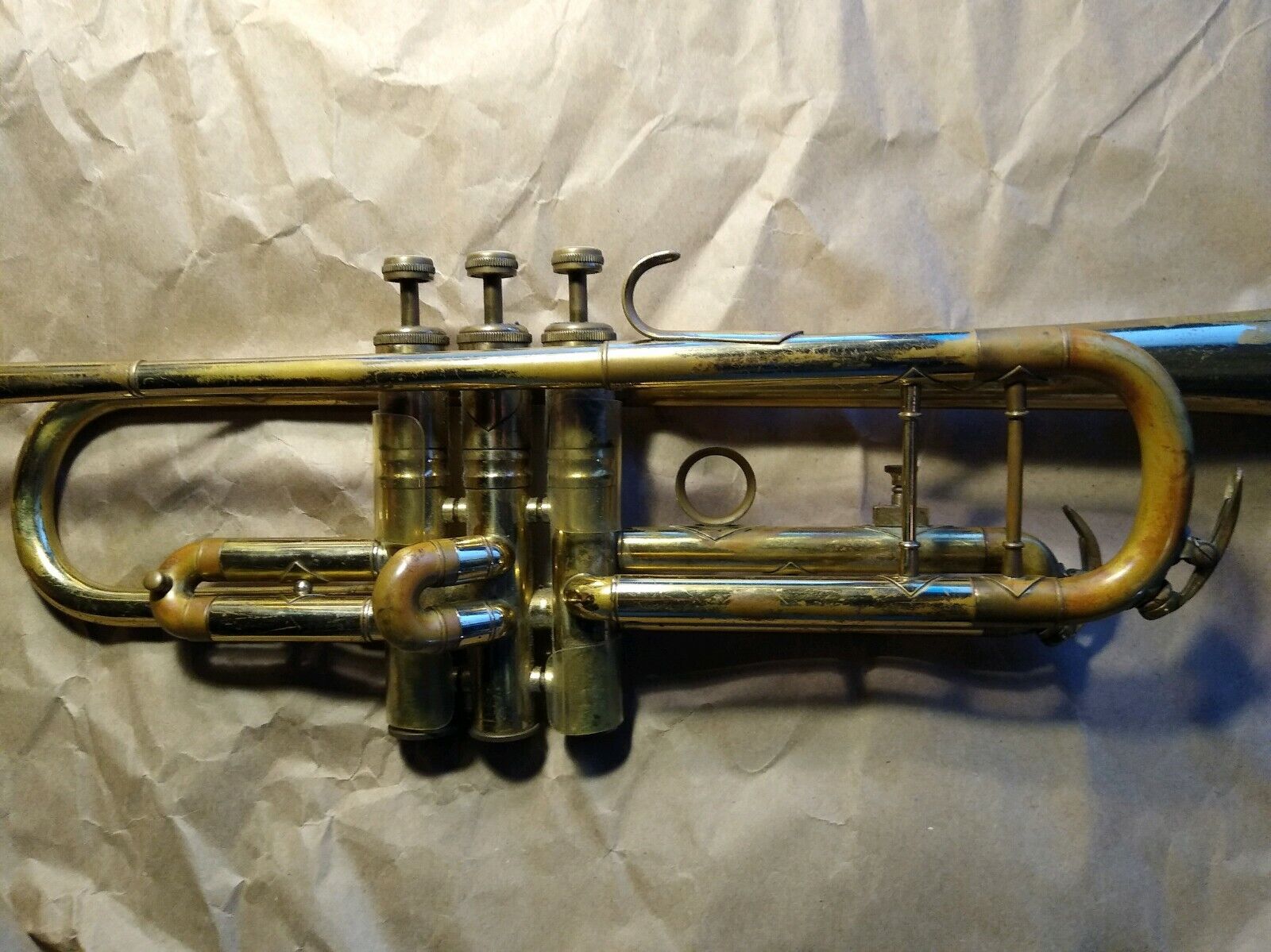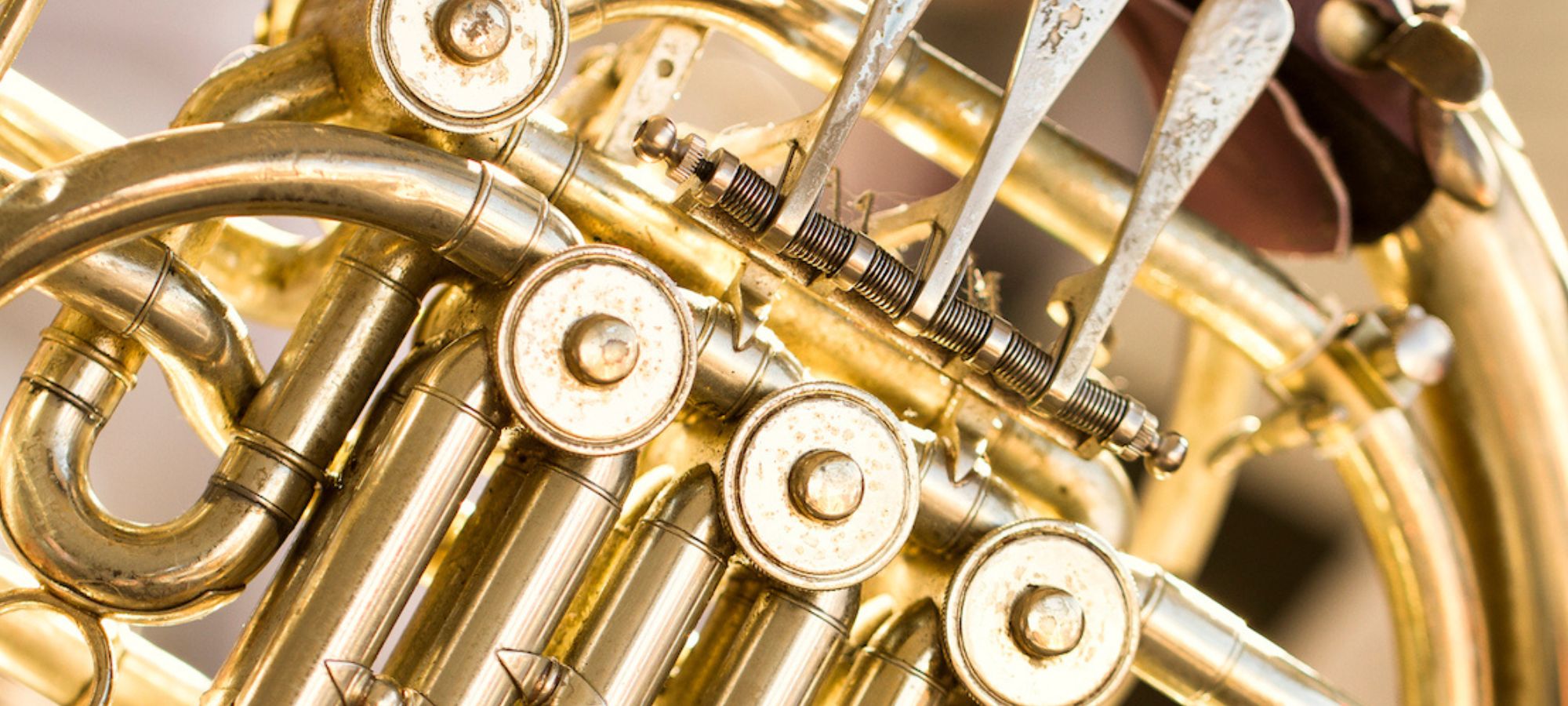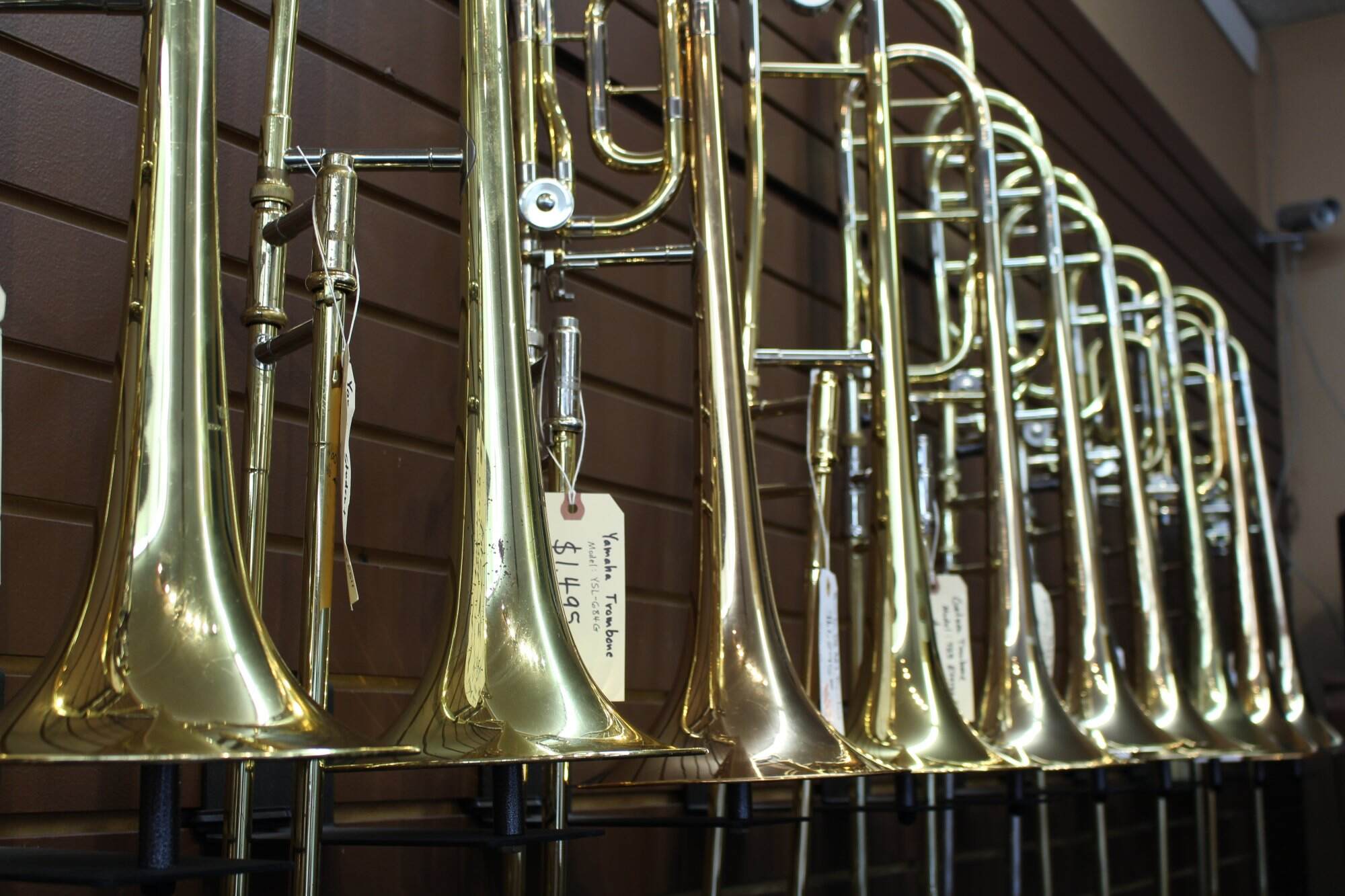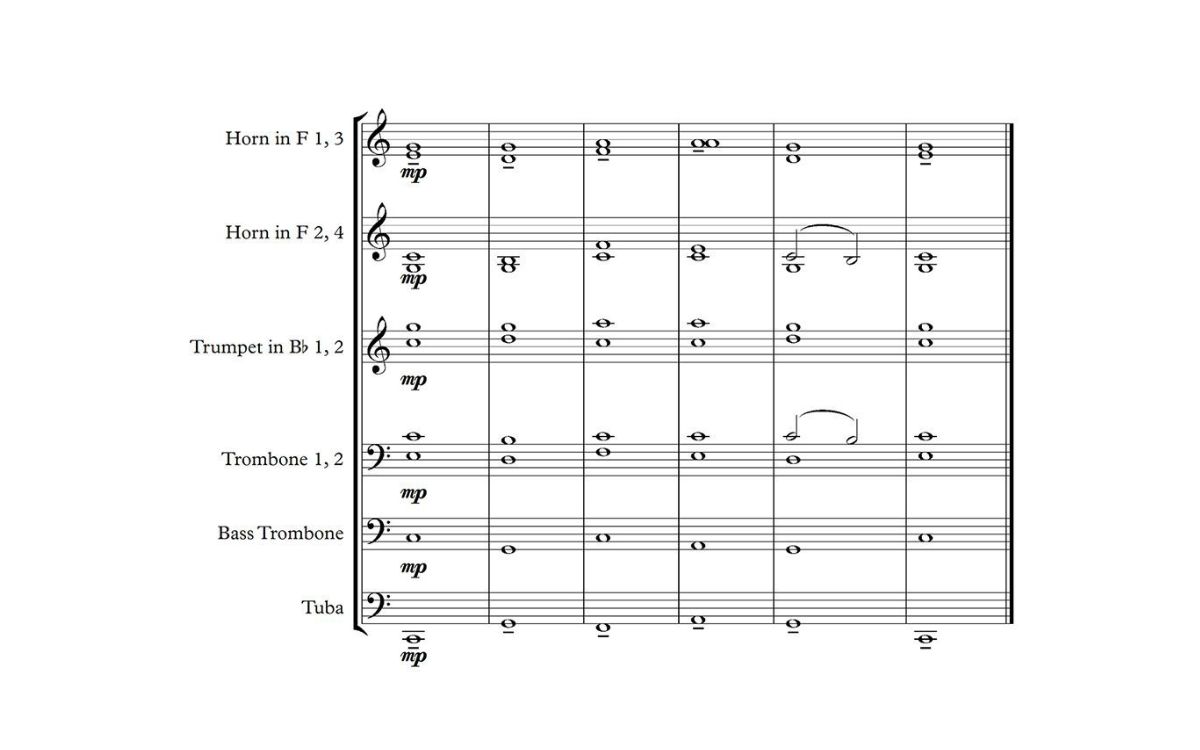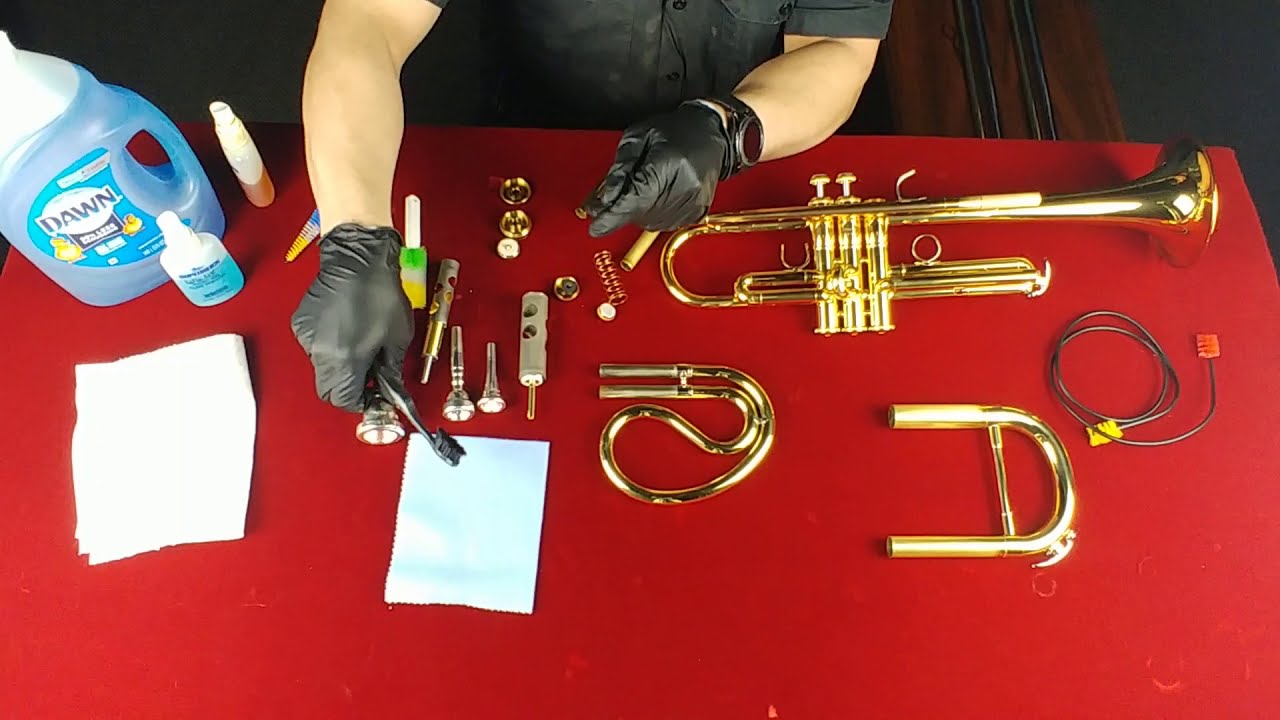Home>Instruments>Brass Instruments>Why Do Brass Instruments Transpose


Brass Instruments
Why Do Brass Instruments Transpose
Modified: February 24, 2024
Discover why brass instruments transpose and learn how this unique characteristic contributes to their versatility and range. Explore the fascinating world of brass instruments.
(Many of the links in this article redirect to a specific reviewed product. Your purchase of these products through affiliate links helps to generate commission for AudioLover.com, at no extra cost. Learn more)
Table of Contents
Introduction
Brass instruments have charmed us with their distinct sound and versatility for centuries. From the regal tones of the trumpet to the warm timbre of the trombone, these instruments have found a special place in a variety of musical genres, from classical to jazz and everything in between. One aspect of brass instruments that may intrigue musicians and listeners alike is the concept of transposition.
Transposition refers to the practice of playing a musical instrument at a different pitch than its written notation. In the world of brass instruments, transposition is common and serves a variety of purposes. It involves altering the key of the instrument, which means that the notes produced when playing a particular written note will be different from what is traditionally expected in standard notation.
Understanding why brass instruments transpose requires delving into the historical background and physics behind these instruments. By exploring the advantages and disadvantages of transposing instruments, we can gain a deeper appreciation for the unique qualities that make brass instruments truly remarkable.
Join us as we embark on a journey to unravel the mysteries of why brass instruments transpose, and discover the fascinating world that lies beneath their shining exteriors.
Definition of Transposition
Transposition, in the context of brass instruments, refers to the practice of changing the pitch of the instrument by playing it in a different key than what is written in the sheet music. With transposing instruments, the written notes do not correspond directly to the sounding notes produced by the instrument.
To understand transposition better, let’s consider an example. Let’s say we have a B-flat trumpet, which is a commonly transposing instrument. When a trumpeter reads a C major scale on the sheet music and plays it as written, the actual pitch that is sounding is actually a B-flat major scale.
This discrepancy between written and sounding pitch occurs because the instrument is designed to sound lower than the written notation. In other words, when a player reads a particular note on the sheet music, they play a different note on their instrument, but the musical intervals and relationships remain the same.
Transposition is not unique to brass instruments; it is also found in other musical families, such as woodwinds and orchestral strings. However, transposition is more prevalent and intricate in brass instruments due to the nature of their construction and historical development.
The concept of transposition can be confusing for those unfamiliar with brass instruments, but it is an essential skill for brass players and composers who work with these instruments. Understanding transposition allows musicians to perform together in different keys, transpose music for different instruments, and create harmonies and orchestral arrangements.
Now that we have a clear understanding of what transposition is, let’s explore the historical background and the physics behind why brass instruments transpose.
Historical Background
To comprehend why brass instruments transpose, it is necessary to delve into the historical background of these instruments. Brass instruments have been in use for centuries, evolving and adapting over time to meet the musical demands and preferences of different cultures and eras.
The early ancestors of modern brass instruments can be traced back to ancient civilizations such as Egypt, Greece, and Rome. These early instruments were typically made of animal horns or conch shells and were used for signaling, religious rituals, and military purposes. As musical theory and notation developed in the Middle Ages, brass instruments began to play a more prominent role in the musical landscape.
During the Renaissance and Baroque periods, brass instruments such as the trumpet and trombone gained popularity in both secular and sacred music. These instruments provided power, brilliance, and depth to orchestral and choral compositions. However, early brass instruments lacked the complex system of valves and slides found in modern instruments, limiting the range of pitches they could produce.
Over time, advancements in instrument design and manufacturing techniques led to the development of valves and slides, allowing players to access a wider range of notes. One consequence of these advancements was the need for different lengths of tubing to produce specific pitches. This led to the emergence of transposing instruments, where the notation was adjusted to accommodate the specific pitch capabilities of the instrument.
Transposition became a practical solution to maintain consistency in musical notation while accommodating the various brass instruments’ inherent pitch differences. For example, the trumpet’s natural pitch is in B-flat, but by adding valves, the player can access a full chromatic scale. However, to maintain consistent fingering patterns and make it easier for trumpet players to switch between different instruments, transposing the notation was necessary.
During the 19th and 20th centuries, brass instruments continued to evolve, with new variations, such as the cornet, French horn, and euphonium, adding to the diverse range of transposing instruments. Each instrument had its own unique transposition, serving specific musical roles and offering distinct tonal qualities.
Today, while some modern brass instruments are “non-transposing” and play in concert pitch (the pitch written in the score), a significant number of brass instruments, such as the trumpet, French horn, and tenor saxophone, still adopt transpositions, carrying on the historical legacy of these instruments.
Now that we have explored the historical background of brass instruments, let’s uncover the physics behind their design and how it relates to transposition.
The Physics of Brass Instruments
The unique sound and mechanics of brass instruments can be attributed to the principles of physics. Understanding the physics behind these instruments helps to shed light on why they transpose and how different pitches are produced.
At the core of every brass instrument is a resonating column of air inside the instrument’s tubing. When the player blows air into the instrument and vibrates their lips against the mouthpiece, sound waves are created. These sound waves travel down the tubing, which acts as a resonator, amplifying and shaping the sound.
The length and shape of the tubing determine the fundamental pitch of the instrument. Shorter tubing produces higher pitches, while longer tubing produces lower pitches. Brass instruments achieve different pitches through a combination of open and closed tubing, as well as the manipulation of air flow using valves or slides.
Instruments like the trumpet and cornet have valves that redirect the flow of air through additional lengths of tubing. By pressing different combinations of valves, musicians can change the effective length of the tubing, altering the pitch produced. This is known as the valve system.
Other brass instruments, such as the trombone and French horn, utilize a slide mechanism. By extending or retracting the slide, the player changes the length of the tubing, thus changing the pitch. This is known as the slide system.
So, why do brass instruments transpose? The answer lies in the design and construction of these instruments. Due to the physics of their tubing and the need for consistent fingerings, many brass instruments are built to play in different keys. This is achieved by transposing the written music so that when the player reads a certain note, the instrument produces a different sounding pitch.
For example, the B-flat trumpet is the most common transposing brass instrument. When a trumpeter reads a written C, they play a B-flat. The notes on the sheet music are transposed to accommodate the instrument’s inherent pitch differences, allowing the player to use consistent fingerings and patterns across different instruments.
By understanding the physics of brass instruments, we gain insight into why they transpose and the intricate relationship between the instrument’s design, pitch production, and musical notation.
Now that we have explored the physics behind brass instruments, let’s delve further into the reasons why brass instruments transpose.
Why Brass Instruments Transpose
Brass instruments transpose for a variety of reasons, including historical traditions, instrument construction, and practicality for musicians. Let’s explore some of the main factors that contribute to the transposition of brass instruments.
One of the primary reasons for transposition is historical tradition. Over the centuries, different regions and musical cultures developed their own unique brass instrument traditions. These traditions often involved specific transpositions for certain instruments, which became deeply ingrained in the musical customs of the time. As musical compositions and ensembles became standardized, the transpositions of these instruments were preserved to ensure continuity and compatibility in performance.
Another factor that influences transposition is instrument construction. Brass instruments are built with different lengths of tubing, valves, and slides, which affect the pitch and range of the instrument. By transposing the music, brass instrument manufacturers and composers can ensure that the fingerings and techniques used on one instrument can be easily transferred to another without extensive relearning. This allows musicians to switch between instruments more seamlessly and facilitates ensemble playing.
Transposition also plays a practical role in accommodating the natural characteristics of brass instruments. Certain brass instruments have different levels of overtone series, meaning that the series of harmonic frequencies produced by the instrument differs from the fundamental pitch. By transposing the music, the instrument’s natural tendencies are taken into account, resulting in better intonation and harmonic resonance.
Additionally, transposition can be advantageous when it comes to the overall range and tessitura of a brass instrument. Some brass instruments, such as the French horn, have a wide range and are capable of playing in both high and low registers. By transposing the music, the player can utilize the instrument’s full range and avoid the limitations of certain notes that may be more difficult to execute.
Transposition also allows for greater flexibility in arranging music for different ensembles and instrumentation. Composers can easily transpose music to accommodate the specific instruments and keys of a brass ensemble, ensuring that the music is well-suited for performance by a particular group. This versatility and adaptability are valuable when working with brass instruments in various musical contexts.
In summary, brass instruments transpose for historical, practical, and musical considerations. The tradition of transposing specific instruments, combined with the construction of brass instruments and the need for practicality and flexibility in performance, all contribute to the prevalence of transposing brass instruments in the musical world.
Now that we understand why brass instruments transpose, let’s explore the advantages and disadvantages associated with transposing instruments.
The Advantages of Transposing Instruments
Transposing instruments offer several advantages that contribute to their continued use and relevance in the world of music. Let’s explore some of the key advantages of transposing instruments.
One of the primary advantages of transposing instruments is their ability to facilitate ensemble playing. Brass ensembles often consist of various instruments that are pitched differently, such as trumpet, French horn, and trombone. By transposing the music, brass players can read and perform from the same sheet music, ensuring that everyone plays in the correct key and maintains the desired harmonies and melodic interplay. This allows for greater flexibility and versatility when performing in a group setting.
Transposing instruments also allow musicians to switch between different instruments within the same family more easily. For example, a trumpet player can easily transition to playing a cornet or flugelhorn without the need for extensive relearning. Transposing the music ensures that consistent fingerings and techniques can be applied across different instruments, making it more convenient for multi-instrumentalists to adapt to different musical contexts.
In some cases, transposing instruments offer technical advantages. Certain instruments have specific tonal characteristics and playing characteristics that are better suited to specific keys. By transposing the music, the player can utilize the instrument’s strengths and overcome any technical challenges associated with certain keys. This allows for better intonation, control, and overall musical expression on the instrument.
Transposing instruments also provide composers and arrangers with increased flexibility in writing music and creating arrangements. By transposing the music to accommodate different instruments, composers can ensure that their compositions are accessible and playable by a wide range of brass players. This allows for a greater variety and diversity in musical compositions and ensembles.
Transposing instruments also have historical and cultural significance. Many traditional brass instruments have long-standing transpositions that are deeply rooted in the history and traditions of certain regions and musical genres. Transposing the music preserves these traditional practices and ensures that the music is performed in the manner intended by the composer or within the historical context of a particular style or period.
In summary, the advantages of transposing instruments include facilitating ensemble playing, enabling instrument versatility, leveraging technical strengths, enhancing compositional flexibility, and honoring historical and cultural traditions. These advantages contribute to the continued use and importance of transposing instruments in the world of music.
Now that we have explored the advantages, let’s delve into the potential disadvantages of transposing instruments.
The Disadvantages of Transposing Instruments
While transposing instruments offer numerous advantages, it is important to acknowledge the potential disadvantages that come with this practice. Let’s explore some of the main disadvantages of transposing instruments.
One of the primary challenges of transposing instruments is the mental and technical adjustment required by the musicians. Players of transposing instruments must become proficient in reading and performing music in the transposed key, which may differ from the written notation. This adds an extra layer of complexity and can potentially be confusing, especially for musicians who are not experienced with transposing instruments.
Transposition can also lead to issues with score reading and collaboration. In an ensemble setting, different instruments may be transposing at different intervals, making it more challenging for musicians to follow and interpret the music accurately. This can hinder the overall synchronization and cohesion of the ensemble, requiring extra rehearsal time and careful attention to detail during performances.
Another disadvantage of transposing instruments is the potential for miscommunication and misunderstandings between musicians. If one musician is unfamiliar with the transposition of a particular instrument, it can lead to confusion and mistakes during rehearsals or performances. Clear communication and understanding among the musicians are crucial to ensure a smooth and accurate interpretation of the music.
Additionally, transposing instruments can create difficulties when playing with non-transposing instruments or non-brass instruments. Musicians playing together in an ensemble may need to make adjustments to their music or transpose it on the spot to ensure compatibility with non-transposing instruments. This can add complexity and potential challenges when collaborating with musicians from different instrument families or musical backgrounds.
Transposition can also limit the range of musical expression for some players. Certain musical phrases or melodic lines may be more challenging to execute in a transposed key due to the characteristics of the instrument. This can impact the artistic interpretation and expression of the music, as well as the overall tonal quality and range of musical possibilities available to the player.
Lastly, transposing instruments may require unique educational resources and materials. Musicians learning to play transposing instruments often need specialized sheet music that is transposed specifically for their instrument. This can limit the availability and variety of repertoire, as well as the accessibility of educational materials for aspiring brass players.
Despite these potential disadvantages, the benefits and artistic possibilities offered by transposing instruments outweigh the challenges for many musicians. Through practice, education, and collaboration, musicians can navigate these drawbacks and continue to enjoy the rich and diverse world of transposing brass instruments.
Now, let’s explore some examples of transposing brass instruments to better understand how transposition works in practice.
Examples of Transposing Brass Instruments
There are several examples of transposing brass instruments that are widely used in different musical traditions and genres. Let’s explore some of these instruments and their respective transpositions:
- B-flat Trumpet: The B-flat trumpet is the most common and widely recognized transposing instrument in the brass family. When a trumpeter reads a written C, they produce a sounding pitch of B-flat. The music for the B-flat trumpet is transposed a whole step lower than the written notation, allowing trumpet players to utilize consistent fingerings and easily switch between different members of the trumpet family, such as the piccolo trumpet or flugelhorn.
- E-flat Horn/Alto Horn: The E-flat horn, also known as the alto horn, is another transposing instrument commonly found in brass bands and orchestras. It is a member of the saxhorn family and is typically used as a middle voice between the lower brass and higher brass instruments. The E-flat horn is pitched a perfect fifth higher than its written notation, meaning that when the musician reads a C, the sounding pitch is actually an E-flat.
- French Horn: The French horn is a versatile and widely utilized transposing instrument with a unique sound and range. In its standard form, the French horn is a transposing instrument in F. When the musician reads a written C, they produce a sounding pitch of F. This transposition enables the French horn to blend well with other instruments in an orchestra and provides a distinctive timbre for solo and ensemble performances.
- Trombone: The trombone is often considered a non-transposing instrument since it typically reads and performs music in concert pitch. However, there are variations of the trombone, such as the alto trombone and the soprano trombone, that are transposing instruments. The alto trombone is pitched higher, usually in E-flat or F, while the soprano trombone is pitched even higher, often in B-flat or C.
- Euphonium: The euphonium, a versatile and expressive instrument, is commonly used in brass bands and orchestras. It is a transposing instrument that is typically notated in treble clef. The euphonium is commonly found in two transpositions: B-flat and E-flat. The B-flat euphonium reads music a major ninth lower than the written notation, while the E-flat euphonium reads music a major sixth lower.
These examples represent just a few of the many transposing brass instruments found in various musical contexts. Understanding the transpositions of these instruments allows musicians to accurately interpret and perform music while maintaining compatibility within ensembles and orchestras.
Now that we have explored numerous examples of transposing brass instruments, let’s conclude our journey into the world of brass instruments and transposition.
Conclusion
In conclusion, the world of brass instruments is rich with history, physics, and the fascinating concept of transposition. Transposing brass instruments, such as the B-flat trumpet, E-flat horn, French horn, trombone, and euphonium, play a crucial role in the diverse landscape of music.
Transposition allows brass players to read and perform music in a different key than what is written, accommodating the inherent characteristics and construction of these instruments. The historical traditions, the physics of tubing and resonance, and practical considerations all contribute to the prevalence and importance of transposing instruments in the musical world.
While transposing instruments offer many advantages, such as facilitating ensemble playing, versatility between instruments, and technical benefits, they also come with challenges. Musicians must adapt to the mental and technical adjustments required, navigate potential issues with score reading and collaboration, and account for the unique characteristics and limitations of transposed keys.
Despite these challenges, the use of transposing instruments continues to be vital in various musical settings. They preserve historical traditions, enhance compositional flexibility, and offer a wide range of tonal possibilities and musical expressions. Musicians and composers alike embrace these instruments for their distinct qualities and contributions to the vibrant world of brass music.
In today’s musical landscape, it is important to appreciate the intricate connections between brass instruments, transposition, and the rich tapestry of musical compositions. Whether performing in a brass ensemble, an orchestra, or as a soloist, understanding the unique nature of transposing brass instruments adds depth and appreciation to the musical experience.
So, next time you listen to the majestic sound of a trumpet or the mellow tones of a French horn, take a moment to marvel at the artistry and craftsmanship behind these transposing brass instruments. They embody the beauty and complexity of the musical world, reminding us of the transformative power of music.


